The key takeaways from the S/S 2026 shows: freedom, colour and romance define fashion’s new chapter
We unpack the trends and takeaways from the S/S 2026 season, which saw fashion embrace a fresh start with free-spirited collections and a bold exploration of colour and form
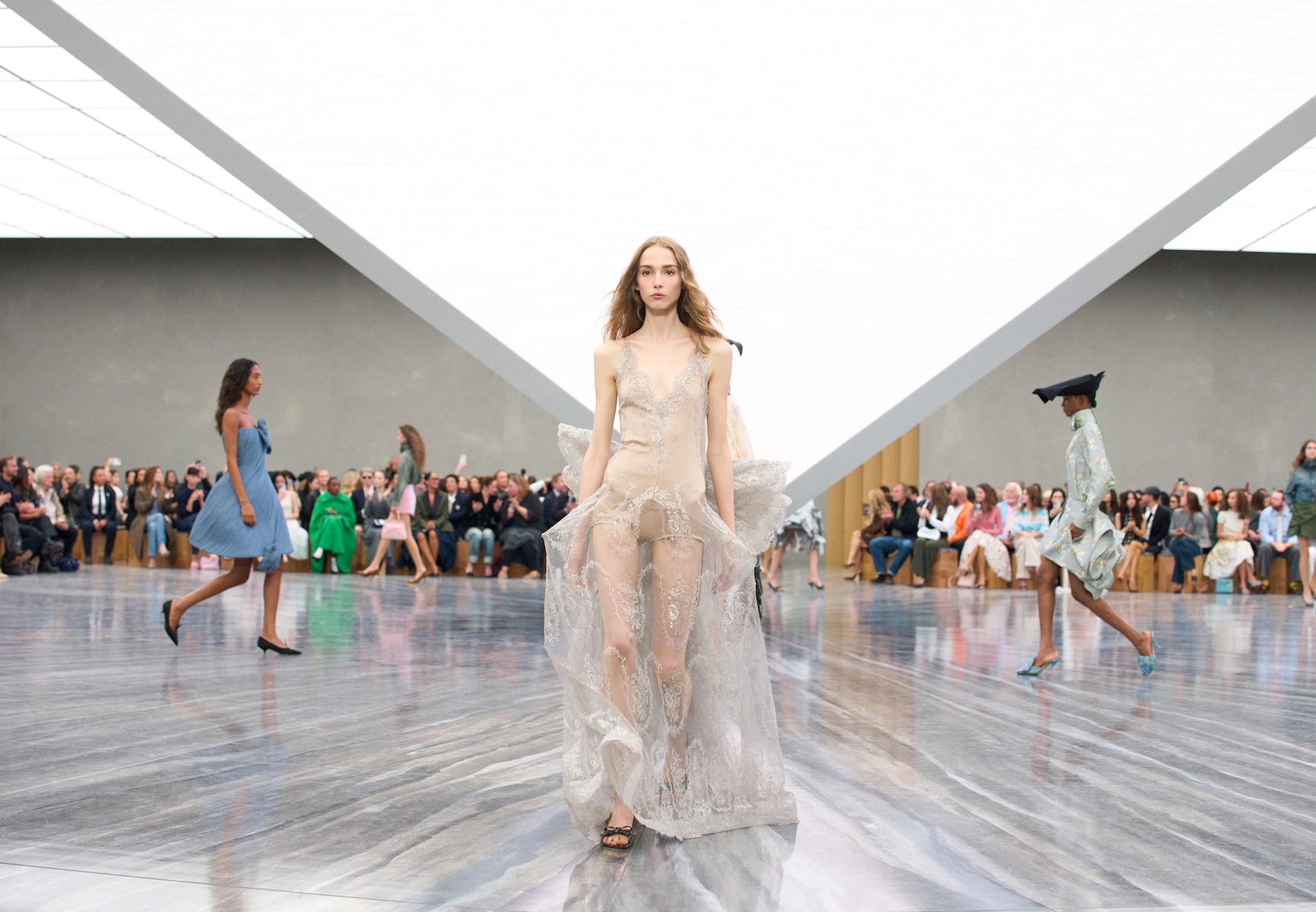
The S/S 2026 season will likely take some time to metabolise. It was fashion’s changing of the guard moment – no less than 14 designers presented debut collections as the newly installed creative directors of the industry’s biggest brands – and with this seismic shake-up came a feeling of noise. Strident social-media comments; opinions formed in moments; debates as to what constitutes the essence of a particular fashion house, and whether this or that designer captured it – lines were well and truly drawn. Duran Lantink’s divisive opening act for Jean Paul Gaultier on Sunday afternoon became something of a lightning rod: drawing ire from social-media users, it prompted questions as to how we engage with fashion online.
‘I have read some really heinous comments about the work of many designers in these last few days,’ said Edward Buchanan, former design director of Bottega Veneta and the Milan Fashion Director for Perfect magazine, in a much-reshared Instagram post. ‘I am a designer and I know that these creatives work hard to get these collections out. It is not always perfect, and it is not always what you personally imagined it to be. You don’t have to like everything... Why not celebrate and talk about what you love?’
Fashion week S/S 2026: the key takeaways
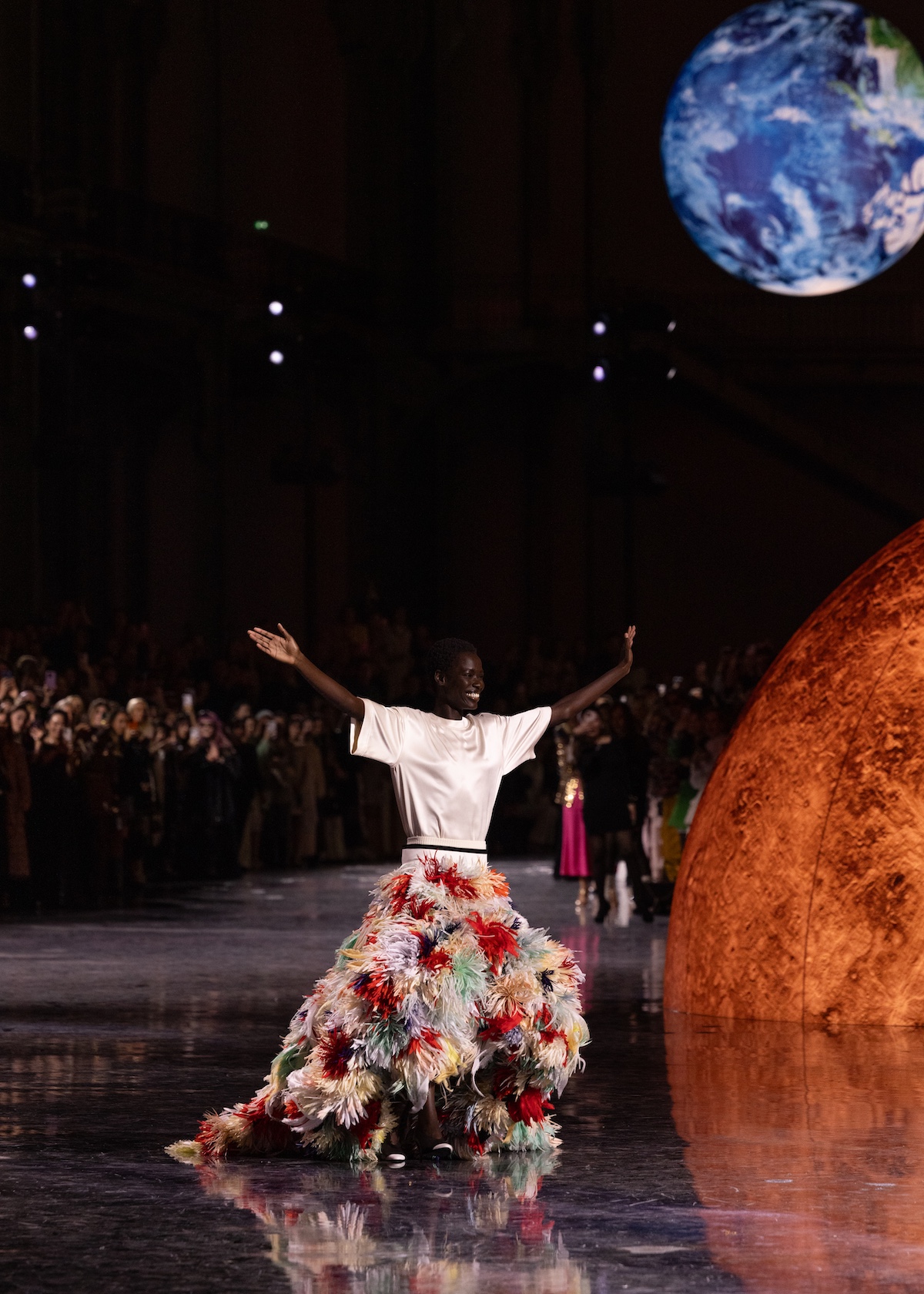
Awar Odhiang closes Matthieu Blazy’s joyful Chanel debut
It was why the finale of Matthieu Blazy’s Chanel debut on Monday evening felt joyful not only for the model Awar Odhiang twirling across the runway to the sounds of ‘Rhythm is a Dancer’ in a gown that descended into thousands of colourful chiffon feathers, but the fact that a weight felt like it had been lifted. Save for a handful of exceptions (Fendi is yet to announce its new creative leadership), that final debut meant that the line-up of designers at fashion’s major houses is set, and likely for some time – no more speculation or gossip, hearsay or rumour. Now, after their opening gambits, these designers must be left to hone their vision – after all, a debut is only the beginning.
Despite this, it has been a strong season of shows, with plenty of big, bold ideas sitting alongside propositions for a real-world wardrobe. There is no doubt that this new class of designers have brought with them a fresh energy: thematically, the idea of freedom emerged again and again, of dressing on your own terms. It's why this season’s trends feel equally liberated – designers gave into romance (albeit rewritten in distinctly modern terms), were unrestrained in their use of colour, and created distinctive silhouettes to match (from the ultra-streamlined to the panniered).
Here, we break down the trends and takeaways from the S/S 2026 shows, which concluded earlier this week in Paris.
The idea of freedom was on designer’s minds
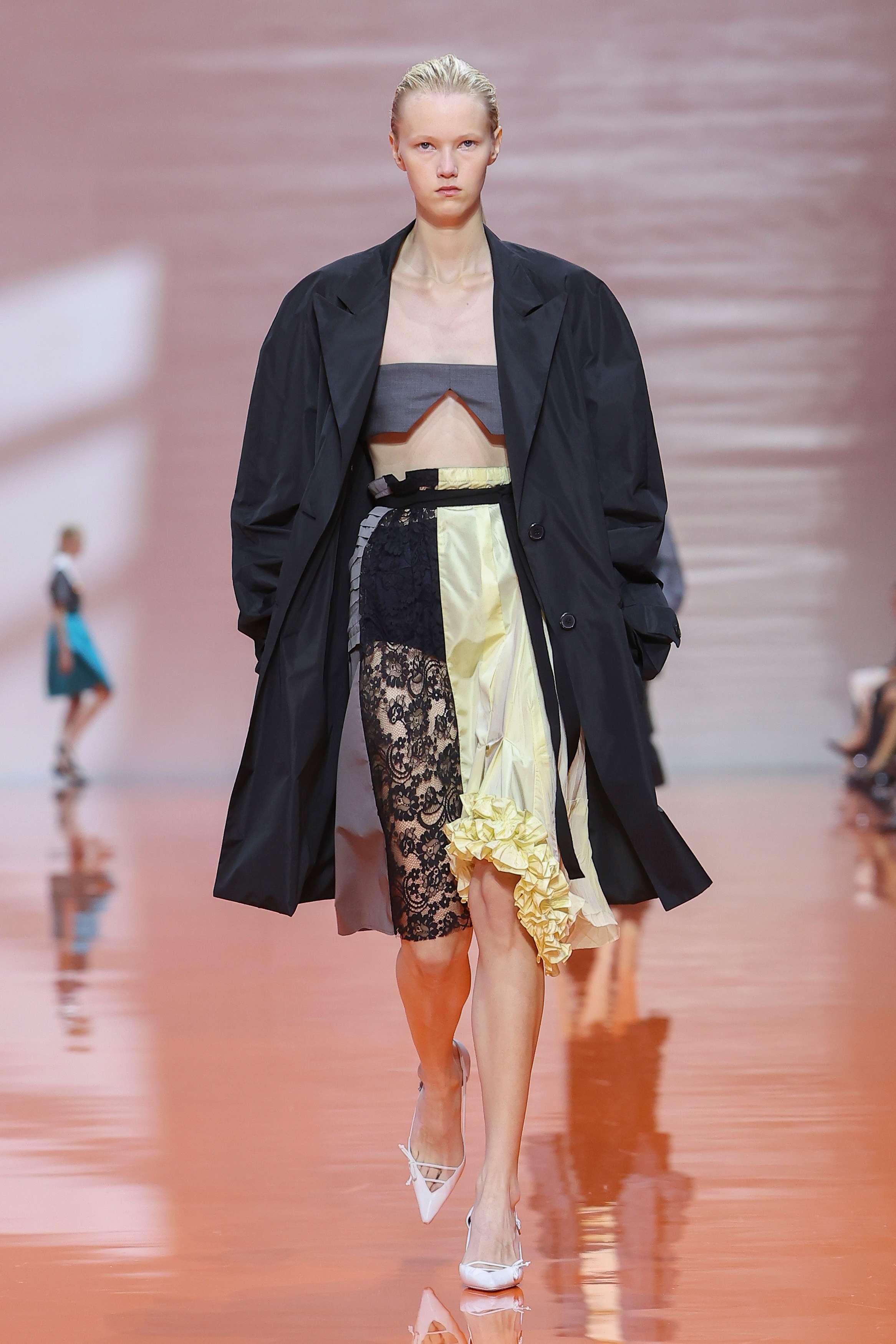
Prada S/S 2026
A feeling of eclecticism has run through recent Prada collections, seeing co-creative directors Miuccia Prada and Raf Simons favour the bold and intuitive over strict thematics – a response, they say, to the uncertain, algorithmic times in which we live. This season, they talked about wanting to liberate clothing from ‘hierarchies’, shuffling simple workwear uniforms – a longtime Prada inspiration point – with colourful flourishes of eveningwear, from ballooning taffeta skirts to opera gloves. The result, said the pair, was a ‘new elegance’ – unconventional, instinctual, free. ‘In the combination of the different elements, in this idea of composition, there is a choice and freedom, authority and agency for the woman wearing them,’ said Mrs Prada. ‘It is fashion that is connected inherently to the world, with a meaning and usefulness. How to face the world, and how to survive.’
Again and again, the idea of sartorial freedom appeared in this season’s collections: at Ferragamo, Maximilian Davis channelled the liberatory dress codes of the 1920s (‘this was a moment where women were creating a new femininity... it was a celebration of freedom, a reclaiming of self’) while at Bottega Veneta, Louise Trotter’s debut collection looked towards Laura Braggion, Bottega Veneta’s first female creative lead, in its expressive use of colour and texture (as young woman, she was a part of Andy Warhol’s Factory). ‘I was imagining her journey – her freedom of being an Italian woman, an archetypal Italian woman, moving to New York,’ she said post-show. ‘It was a liberation for her. And that's really what I wanted to capture – a feeling of liberation.’
Receive our daily digest of inspiration, escapism and design stories from around the world direct to your inbox.
A similar mood was struck at Chanel (Matthieu Blazy was inspired by the ‘modernity and freedom’ of Gabrielle ‘Coco’ Chanel’s designs), Loewe (the collection’s bold, graphic line drew on the work of artist Ellsworth Kelly) and Hermès (titled ’Free Rein’, Nadège Vanhée referenced the untethered wild horses of Carmague). Through it all, there was an invitation to dress on your own terms, and without restraint.
Kaleidoscopic colour ran throughout
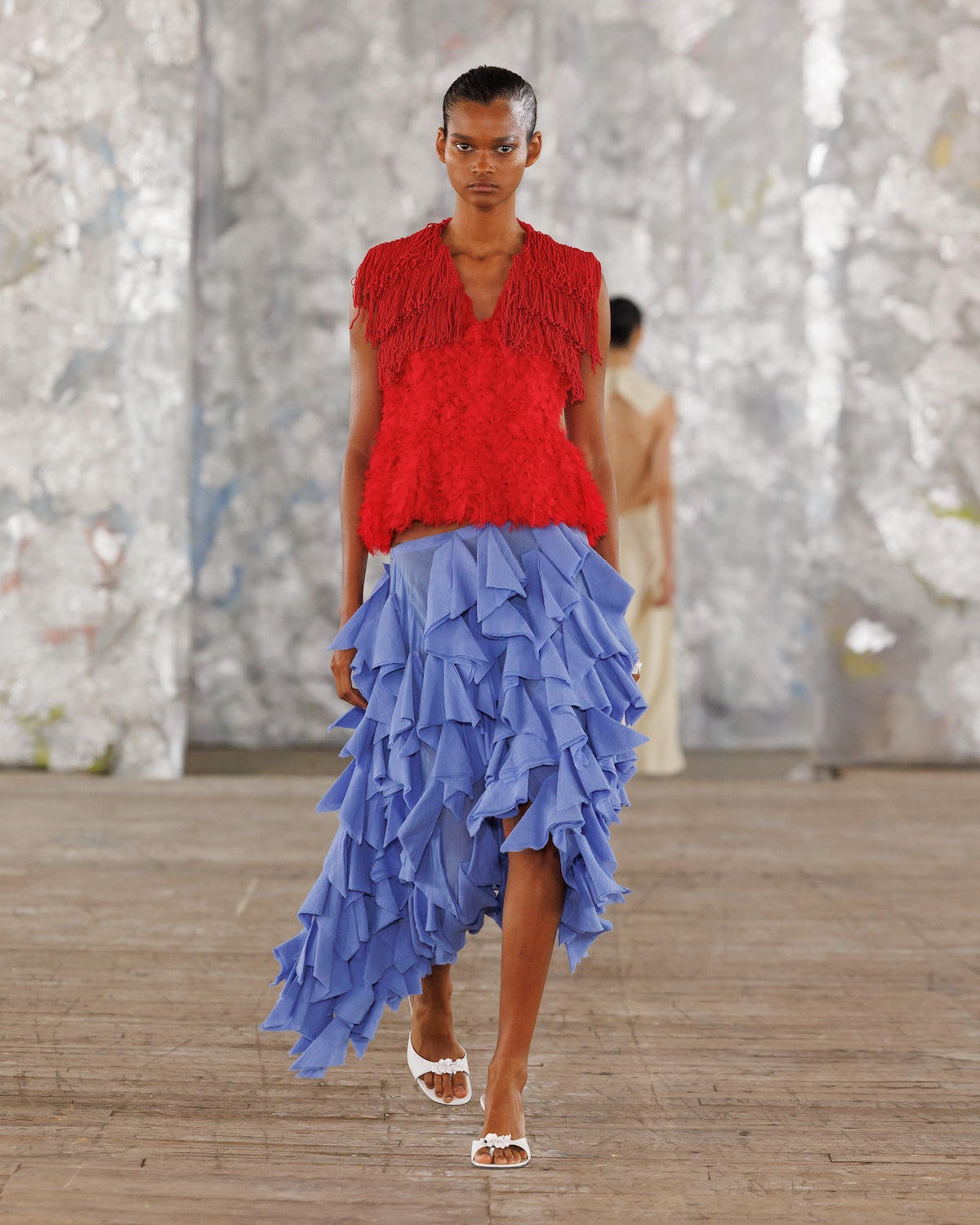
Diotima S/S 2026
With this exploration of freedom came an equally liberated use of colour, as designers embraced bold, unapologetic hues in what was the most colourful fashion season in some time – a response, perhaps, to the feeling of bleakness elsewhere. This was a trend not restrained to a single city: in New York, Rachel Scott made a powerful impression with a debut runway show for her label Diotima which drew on the energetic spirit of carnival – a vivid, painterly palette spanned bright red, sky blue and cerise across anemone-like ruffles and tassel flourishes – while London saw colour-saturated outings from Erdem, Talia Byre and Burberry (a hot pink whipstitched leather jacket provided the latter’s closing look, with creative director Daniel Lee looking towards the dress codes of 1960s and 70s musicians).
As the season continued, a more graphic use of colour emerged: Simone Bellotti’s debut collection for Jil Sander featured bold primary hues of red and blue throughout; when viewed against the crisp white walls of Jil Sander’s Milanese HQ, they took on the feel of contemporary artworks. At Jack McCollough and Lazaro Hernandez’s debut for Loewe, a work by Ellsworth Kelly set the tone: hanging in the entranceway of the showspace, Yellow Panel with Red Curve (1989) inspired the ‘chromatic intensity’ of the collection (zingy hues of yellow, electric blue and orange featured throughout). Stripes also appeared in the former Proenza Schouler designers’ collection, another recurring motif through the season, like at Dries Van Noten, where Julian Klausner – already proving himself as much of a master colourist as the label’s eponymous founder – presented a vivid collage of print and colour, from bold yellow stripes to abstracted polka dots, spirals and harlequin diamonds, blown up is size.
Designers evoked the time-worn and well-loved
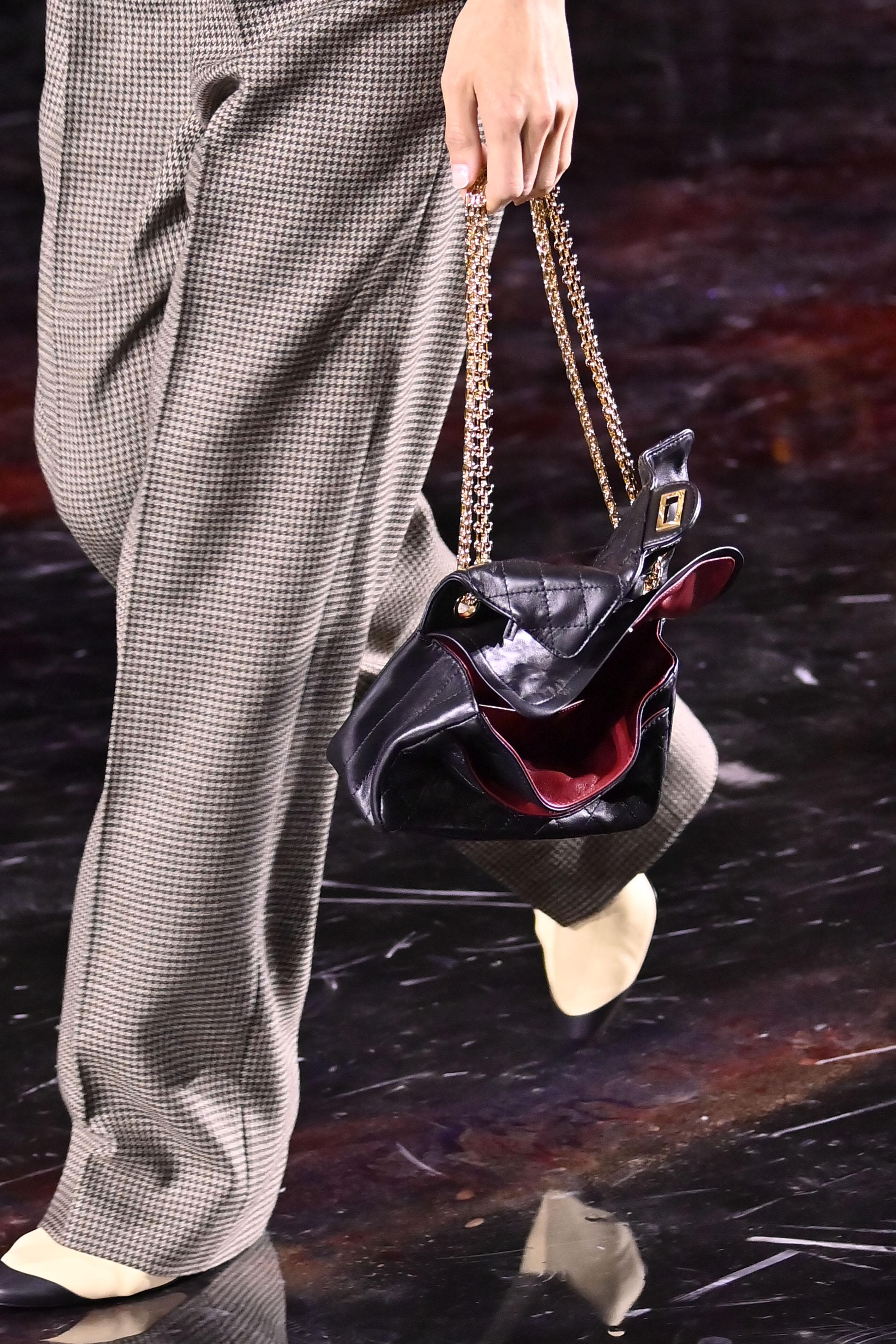
Chanel S/S 2026
The idea of inheritance was unsurprisingly on the mind of Matthieu Blazy at Chanel – after all, his debut for the house sees him take on the legacy of not one but two fashion greats: Gabrielle ‘Coco’ Chanel and Karl Lagerfeld. Originally inspired by the love affair between Gabrielle Chanel and British polo player Boy Capel, and the way she would borrow his jackets and shirts, the idea of passing garments between people – or indeed through generations – was one of the throughlines of the collection. That, he said, is the luxury of a house like Chanel, ‘the worn familiarity of the truly chic, items feel passed down and utilised,’ as he described. In the collection, this was figured in garments which appeared to be unravelling at their edges (the hanging ‘threads’ were actually minuscule strings of beads), while the 2.55 quilted handbag had been cleverly manipulated to appear battered and worn.
Indeed, the idea of the time-worn and well-loved run through the season: at Tory Burch in New York, cardigans seemed to be disintegrating at the sleeves, while other garments were purposely crumpled and creased. ‘I wanted something familiar and worn, but uber-chic and elevated,‘ she said after the show, noting that such fabric manipulation took months of experimentation despite their illusion of ease. At Coach, garments were weathered and worn – creative director Stuart Vevers said he was inspired by seeing vintage, decades-old Coach bags carried by young people on New York’s streets – while at Loewe, some of the more washed-out hues looked to reference fabric left out too long in the sun.
There was a mood of modern romance
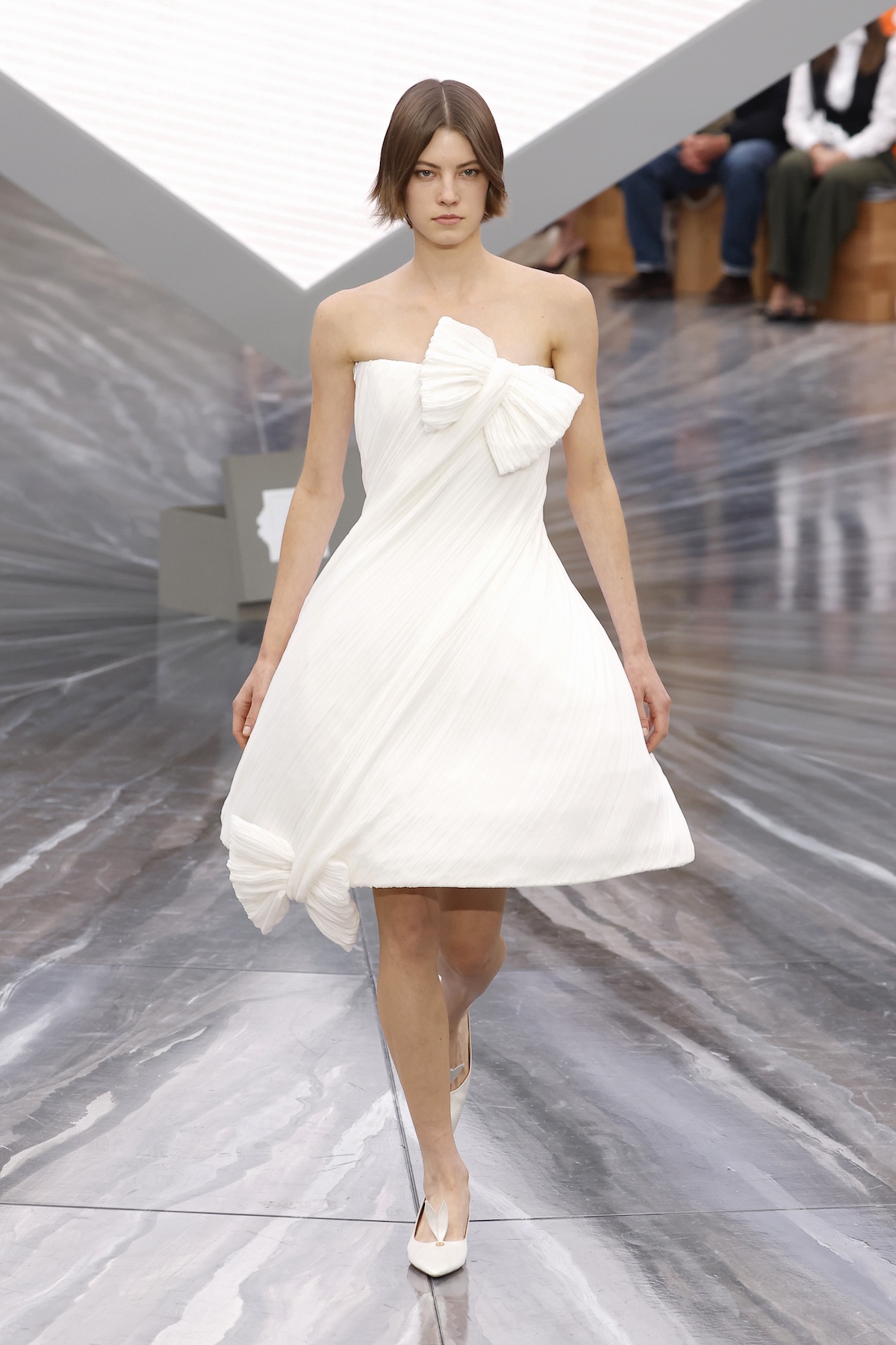
Dior S/S 2026
Taking place at the Louvre Palace, the opulent summer apartments of Anne of Austria, Queen of France provided the backdrop for Nicolas Ghesquière’s latest collection for Louis Vuitton, an attempt to capture ‘the boundless freedom of the private sphere’. In its evocation of nightwear and lingerie – as well as flourishes of beaded floral embroidery, satin ruffles and enormous bows – the era-traversing collection captured a mood of romance that ran through the season, one which was influenced by history but distinctly modern in construction and anything but saccharine.
At his debut womenswear show for Dior, Jonathan Anderson evoked the pannier waistline – another surprising trend of the season, particularly as it coincided with the opening of ‘Marie Antoinette Style’ at the V&A – as well as bows, lace necklines and shoes adorned with twisting satin roses. The Irish designer said he was interested in the ‘tension’ between fantasy and reality: ‘past converses with the present, the bold with the calm, the grand with the commonplace,’ he said. Similar juxtapositions ran through Simone Rocha’s S/S 2026 collection in London, a designer who has long contrasted sweetness and subversion. Her crinoline skirts were purposely skewiff; ruffled-edge bags were shaped like pillows, while panels of clear vinyl sat atop delicate silk gowns.
Meanwhile, at Givenchy, Sarah Burton rallied against the idea that power dressing for women means simply donning a man’s suit. Instead, she sought to find authority in the feminine, from pearl-adorned bra tops to frilled mini dresses which flared like tutus. ‘I was looking at female power,’ she said. ’And how to empower women through archetypes of the feminine, an iconography of the female.’
Bold silhouettes signalled new chapters
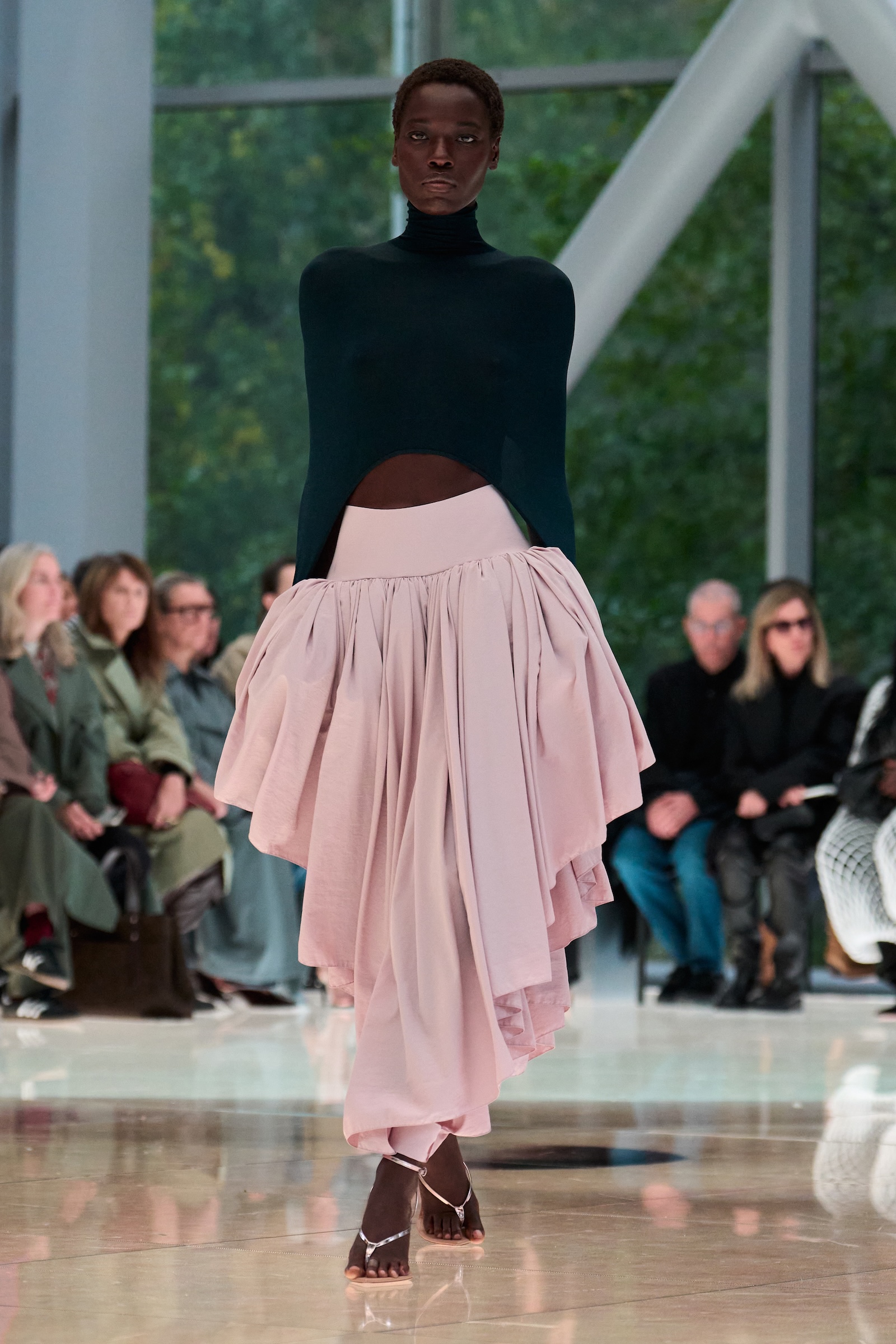
Alaïa S/S 2026
Like this season’s prismatic palette, designers were equally expressive when it came to shape and form: spanning the playful, the sculptural and the streamlined, silhouettes echoed the month’s liberated spirit. There were Nicholas Aburn’s bold party dresses at Area, constructed from blown-up streamers, enormous pailettes or a shaggy mass of glimmering tinsel (such was their size, they transformed the proportions of the body); Louise Trotter’s undulating fibreglass tops and dresses at Bottega Veneta; or the hiked up shoulder line of Satoshi Kondo’s latest collection for Issey Miyake (the Japanese designer said he imagined the garments having a conscious of their own).
Contemporary riffs on pannier waistlines and crinoles ran through the season, including at Alaïa, where Pieter Mulier continues to define a powerful vision of womanhood with an eye to the contours of the body. ‘This collection is reduced, sculptural. Precise. Yet there is also an extremity to it, in heightened colours, bold shapes. Uncompromising,’ he said. Perhaps most extreme, though, were the bold forms of Duran Lantink’s Jean Paul Gaultier debut – like in his collections for his (currently paused) eponymous label, garments were exaggerated into almost cartoon-like proportions, riffing on the house’s signatures, from the sailor hat to trompe l’oeil prints. They may not have been for everyone, but in their audaciousness, they captured S/S 2026’s mood of abandon.
Jack Moss is the Fashion & Beauty Features Director at Wallpaper*, having joined the team in 2022 as Fashion Features Editor. Previously the digital features editor at AnOther and digital editor at 10 Magazine, he has also contributed to numerous international publications and featured in ‘Dazed: 32 Years Confused: The Covers’, published by Rizzoli. He is particularly interested in the moments when fashion intersects with other creative disciplines – notably art and design – as well as championing a new generation of international talent and reporting from international fashion weeks. Across his career, he has interviewed the fashion industry’s leading figures, including Rick Owens, Pieter Mulier, Jonathan Anderson, Grace Wales Bonner, Christian Lacroix, Kate Moss and Manolo Blahnik.
-
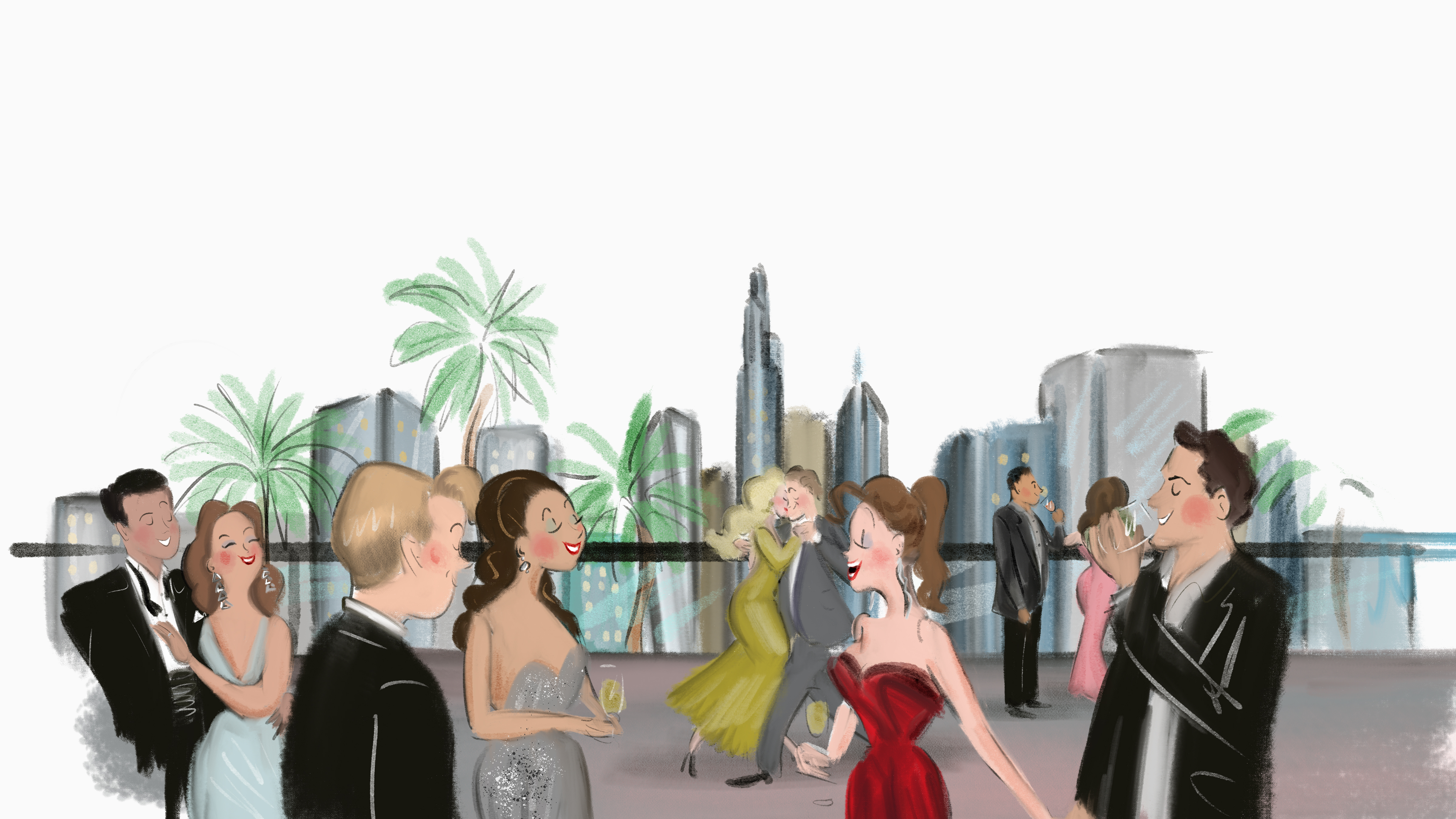 St. Regis Hotels and Resorts illustrates its spirit of celebration
St. Regis Hotels and Resorts illustrates its spirit of celebrationA collaboration between St. Regis and New York artist Tug Rice captures the storied brand’s Gilded Age glamour and decadent modernity
-
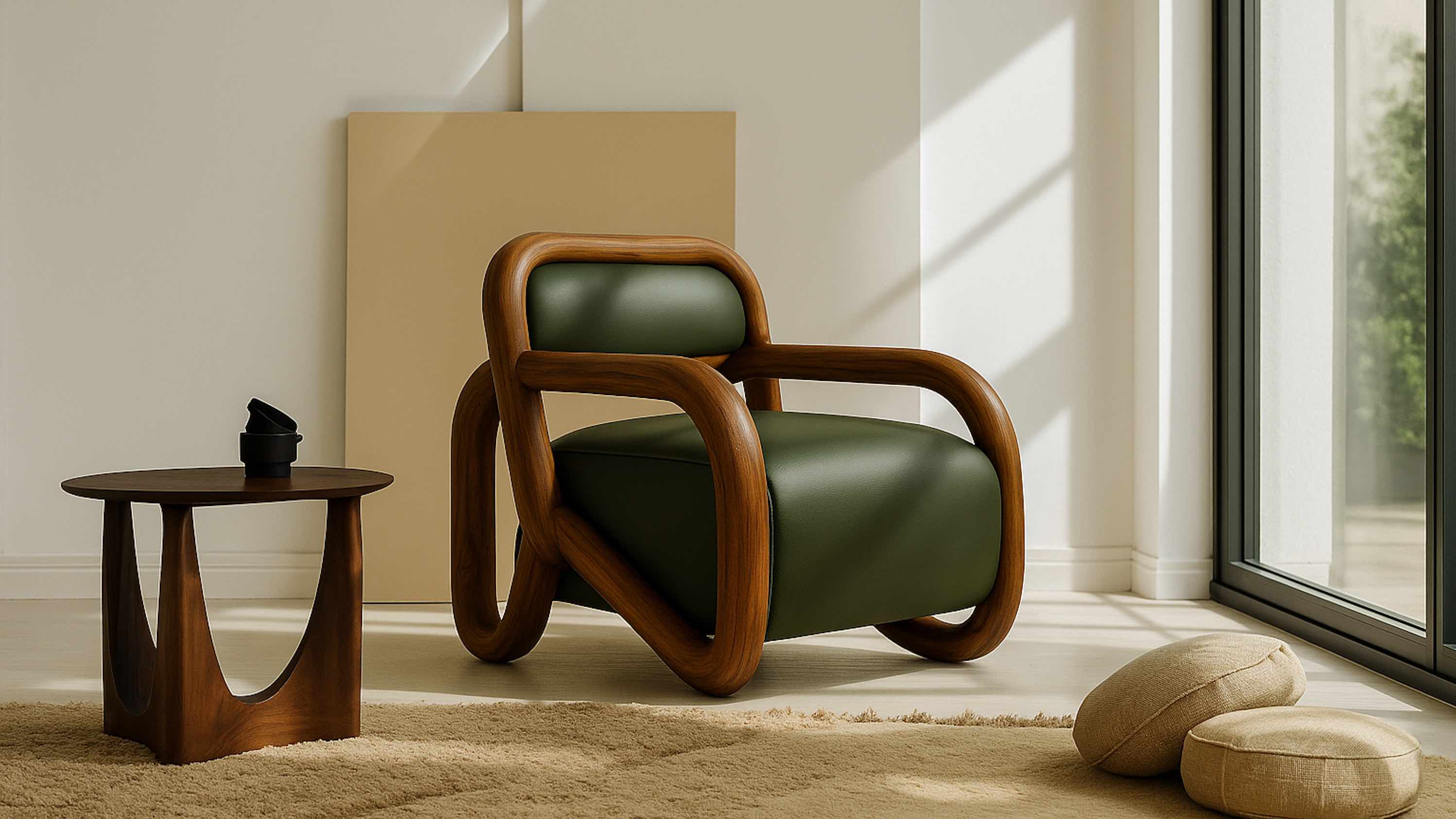 Five women-led studios reshaping Indian creativity at Design Mumbai 2025
Five women-led studios reshaping Indian creativity at Design Mumbai 2025Design Mumbai 2025 opens 26-29 November – Wallpaper* meets five women-led local brands exhibiting at this year's show
-
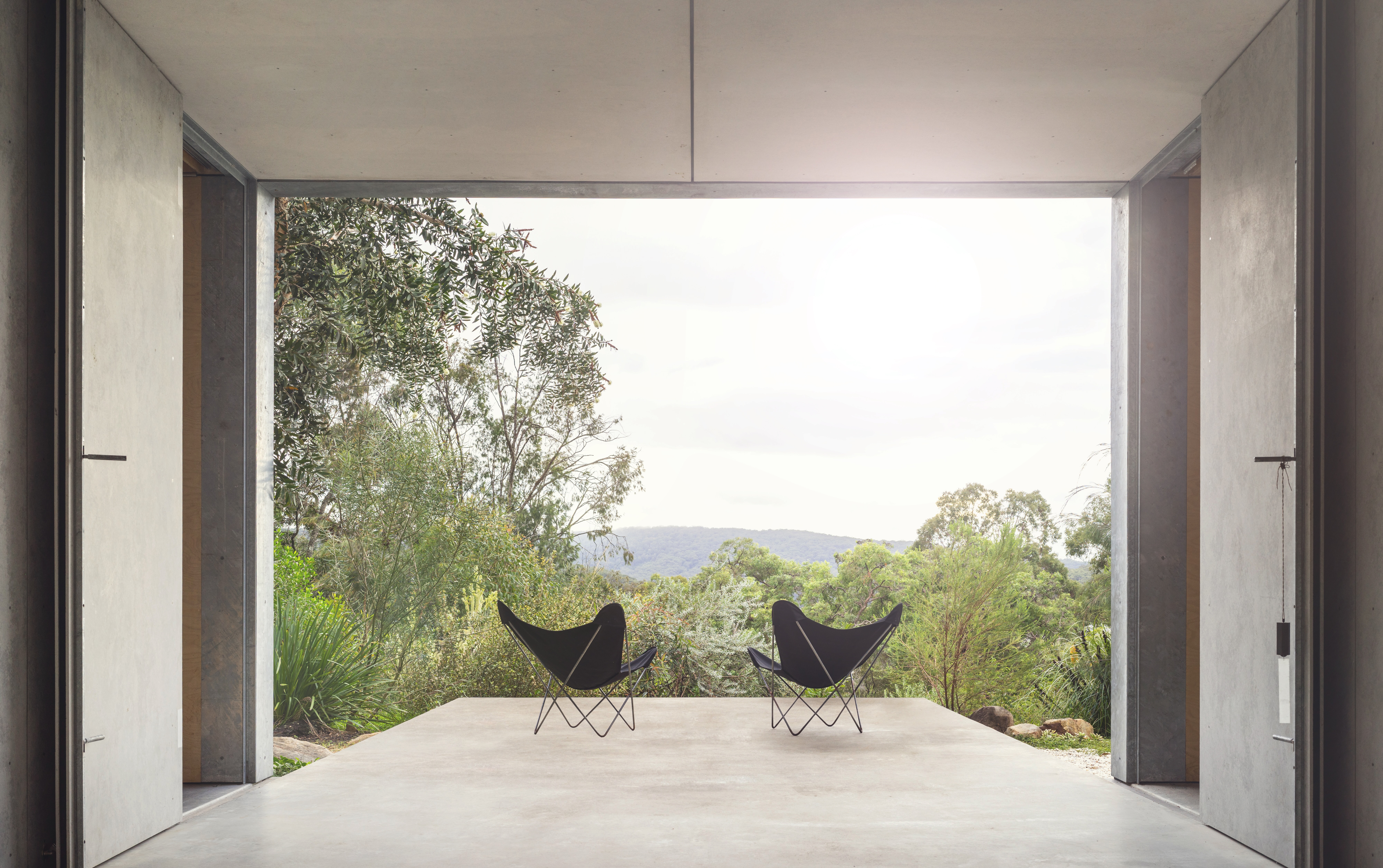 An Australian holiday home is designed as a bushfire-proof sanctuary
An Australian holiday home is designed as a bushfire-proof sanctuary‘Amongst the Eucalypts’ by Jason Gibney Design Workshop (JGDW) rethinks life – and architecture – in fire-prone landscapes, creating a minimalist holiday home that’s meant to last
-
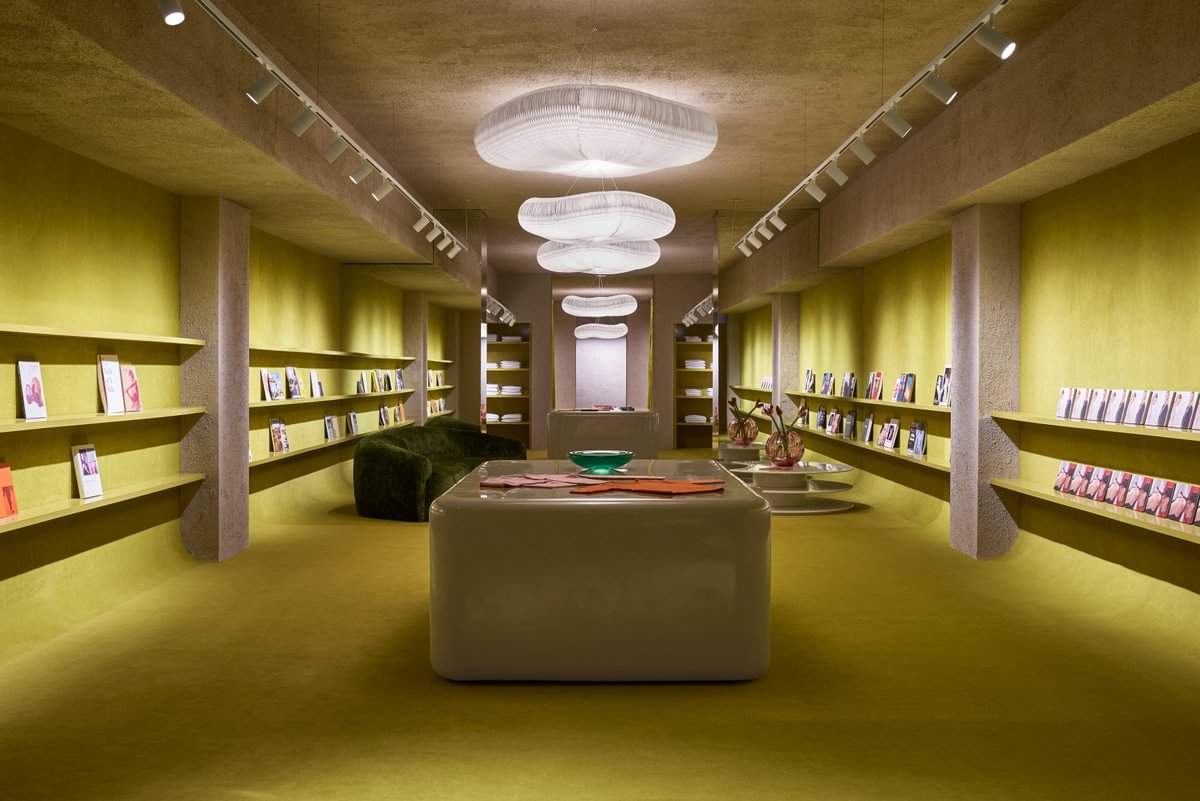 Extreme Cashmere’s New York store is a haven for knitwear and furniture lovers alike
Extreme Cashmere’s New York store is a haven for knitwear and furniture lovers alikeDesigned to evoke a ‘luxurious home’, the Amsterdam-based knitwear label’s sophomore store on New York’s Mercer Street features an enviable interior curation – from poppy-print Milo Baughman chairs to a hot-pink Sabine Marcelis ‘donut’
-
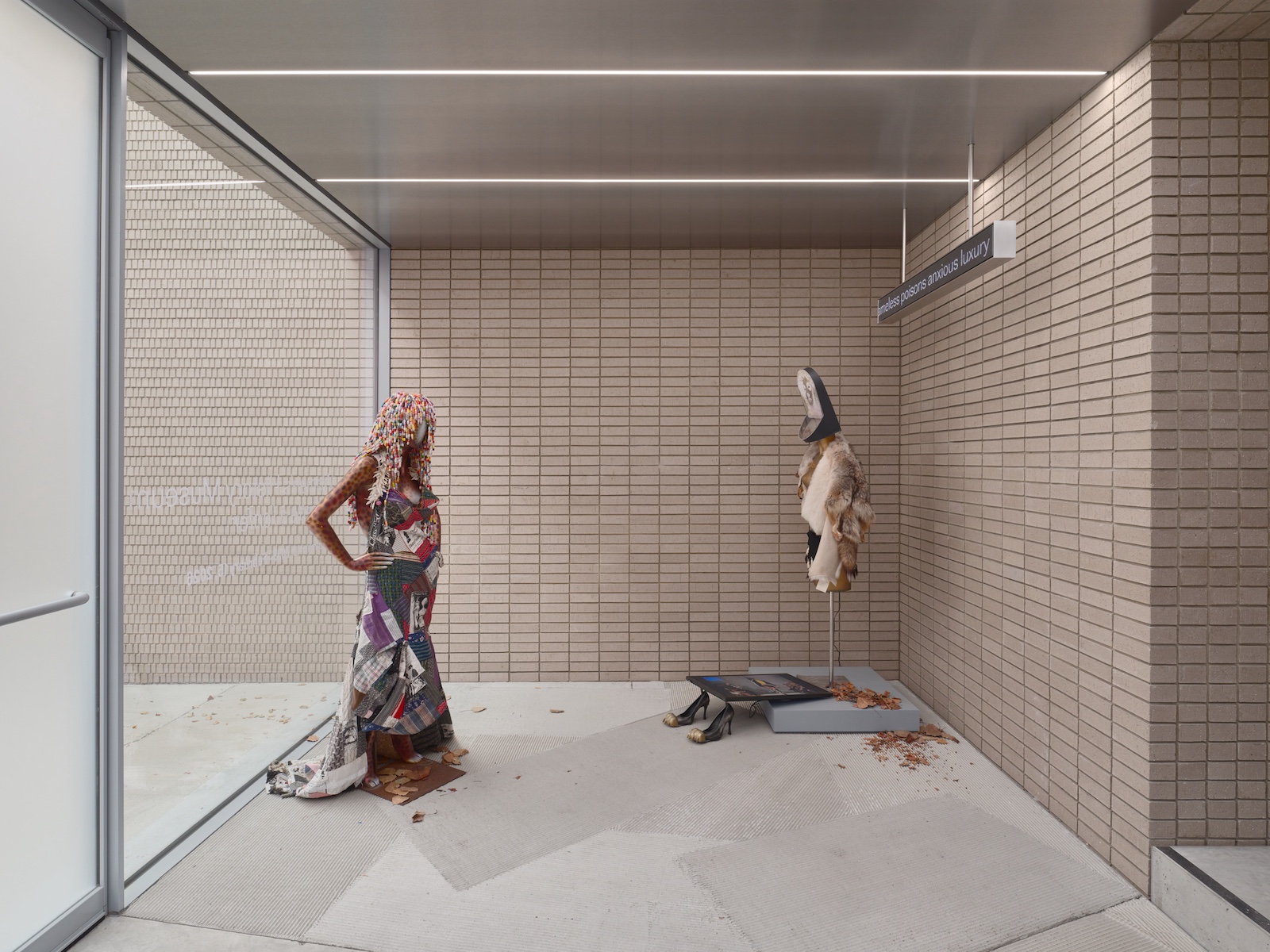 The story behind rebellious New York fashion label-cum-art collective, Women’s History Museum
The story behind rebellious New York fashion label-cum-art collective, Women’s History MuseumMattie Barringer and Amanda McGowan’s multidisciplinary label has been challenging fashion’s status quo for the past decade. As they open a new exhibition at Amant, Brooklyn, the pair sit down with Wallpaper* to discuss their provocative approach
-
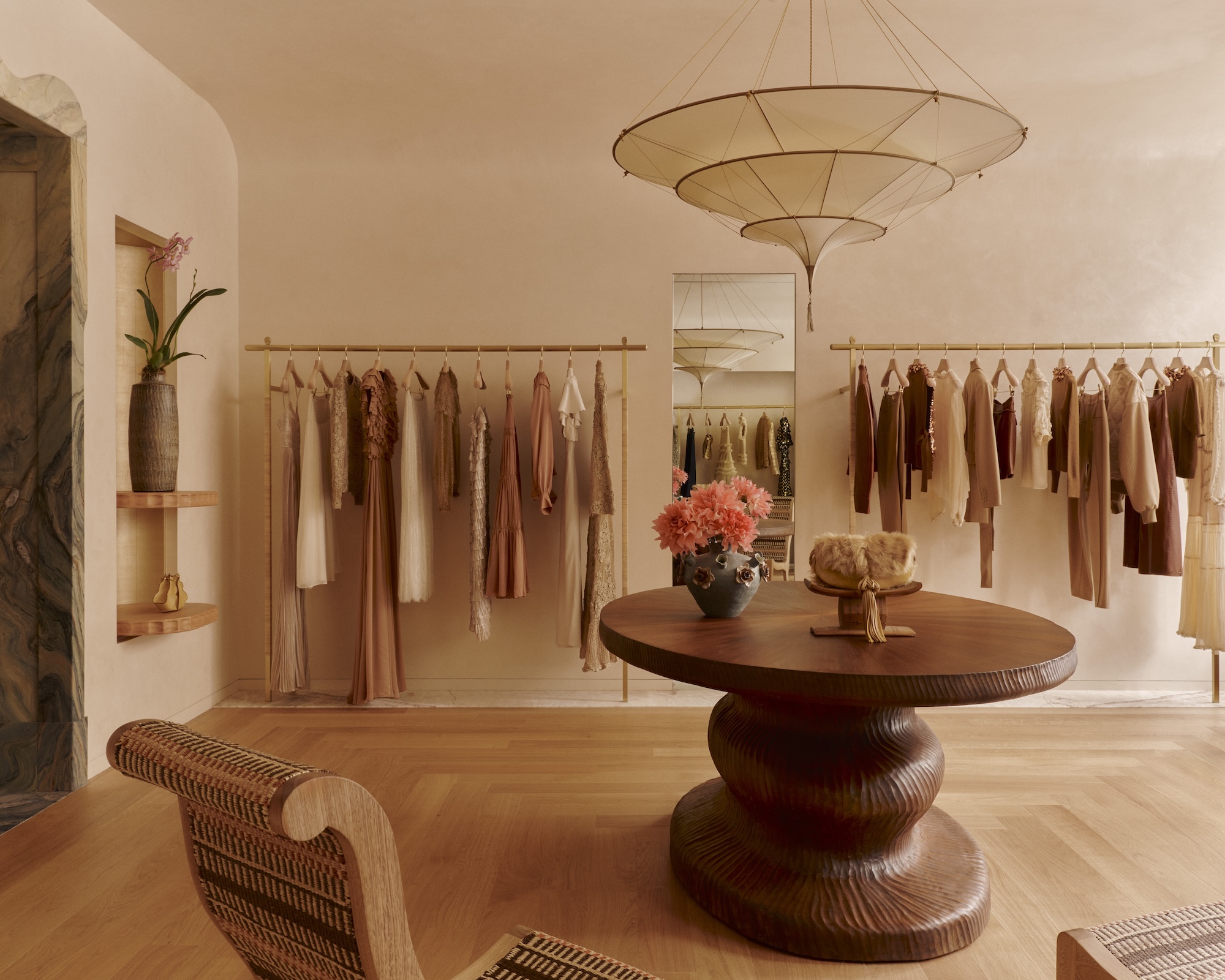 Ulla Johnson’s new Upper East Side boutique feels like a ‘glowing jewel box of treasures’
Ulla Johnson’s new Upper East Side boutique feels like a ‘glowing jewel box of treasures’Design studio Valle de Valle took cues from the neighbourhood's historic buildings, from the Frick to the Carlyle, in designing this dreamy boutique
-
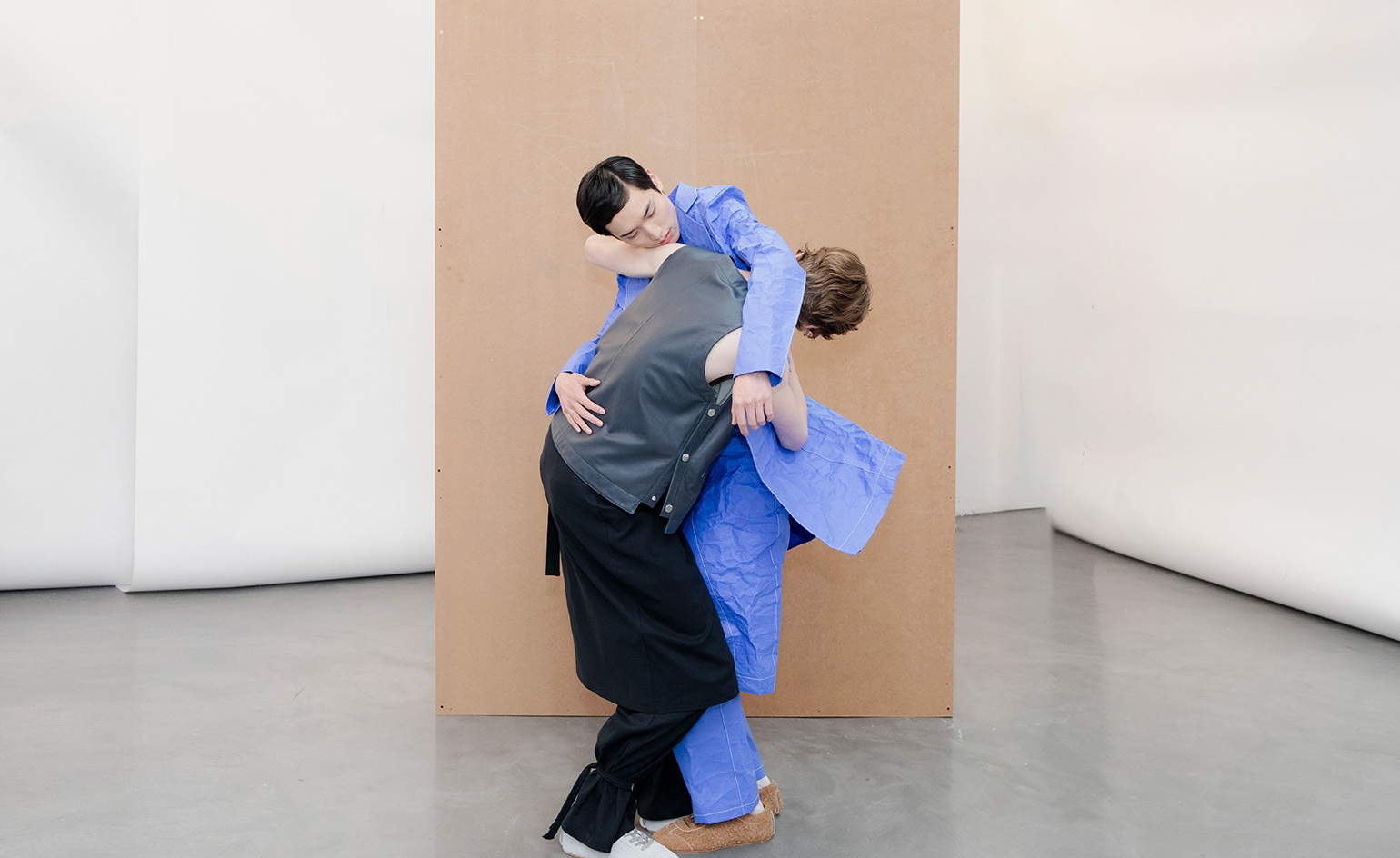 The independent designers you might have missed from fashion month S/S 2026
The independent designers you might have missed from fashion month S/S 2026Amid a tidal wave of big-house debuts, we take you through the independent displays that may have slipped through the cracks – from beautiful imagery to bookshop takeovers, museum displays and moves across the pond
-
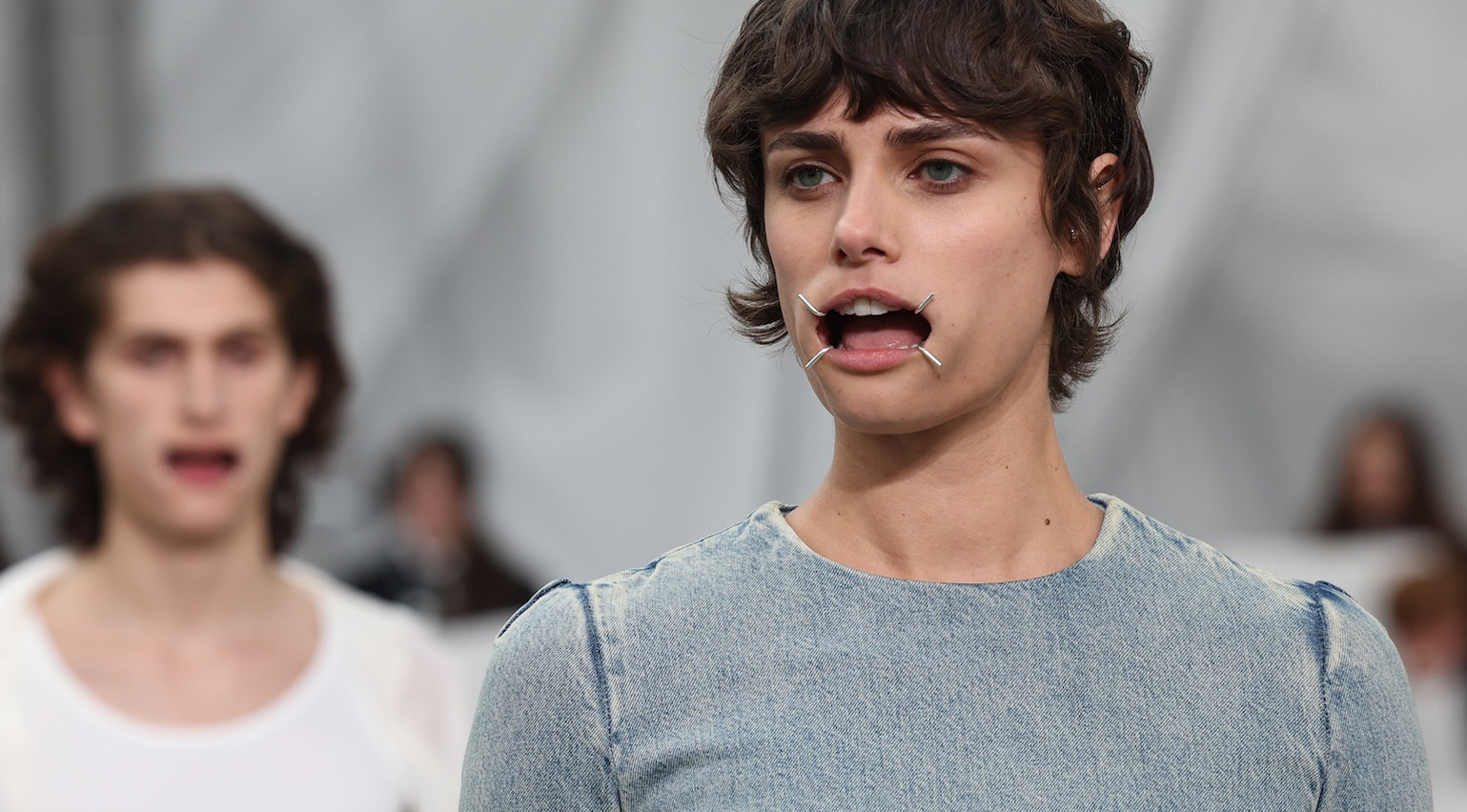 From wearable skincare to scented runways, unpacking the unconventional beauty moments of fashion month S/S 2026
From wearable skincare to scented runways, unpacking the unconventional beauty moments of fashion month S/S 2026The S/S 2026 season featured everything from probiotic-lined athleisure to fragranced runways – and those Maison Margiela mouthguards
-
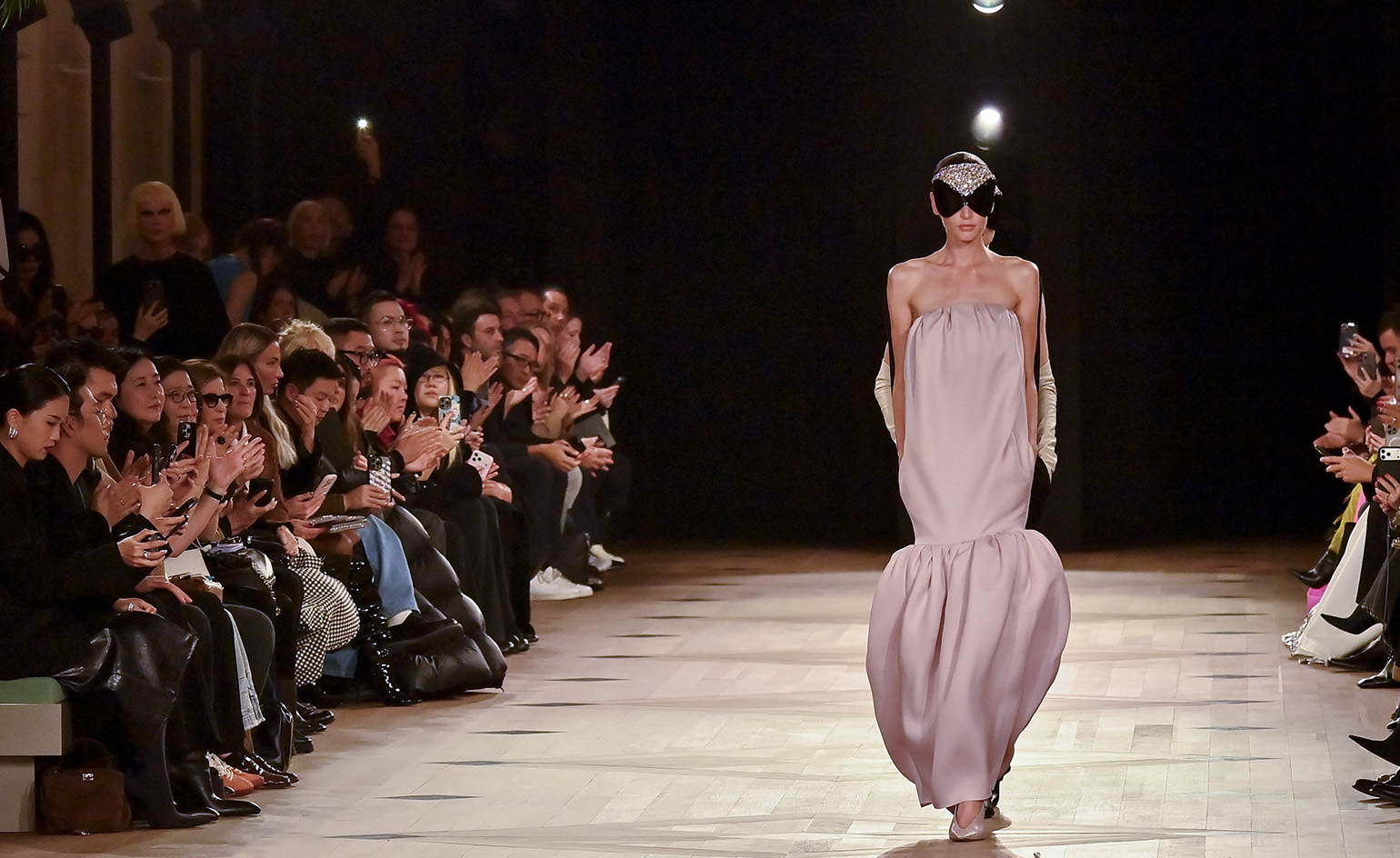 Pierpaolo Piccioli makes Balenciaga debut ‘from a place of love and connection’
Pierpaolo Piccioli makes Balenciaga debut ‘from a place of love and connection’Attended by Anne Hathaway and Meghan Markle, the ex-Valentino designer’s first runway display for Balenciaga took place within Kering’s Paris headquarters
-
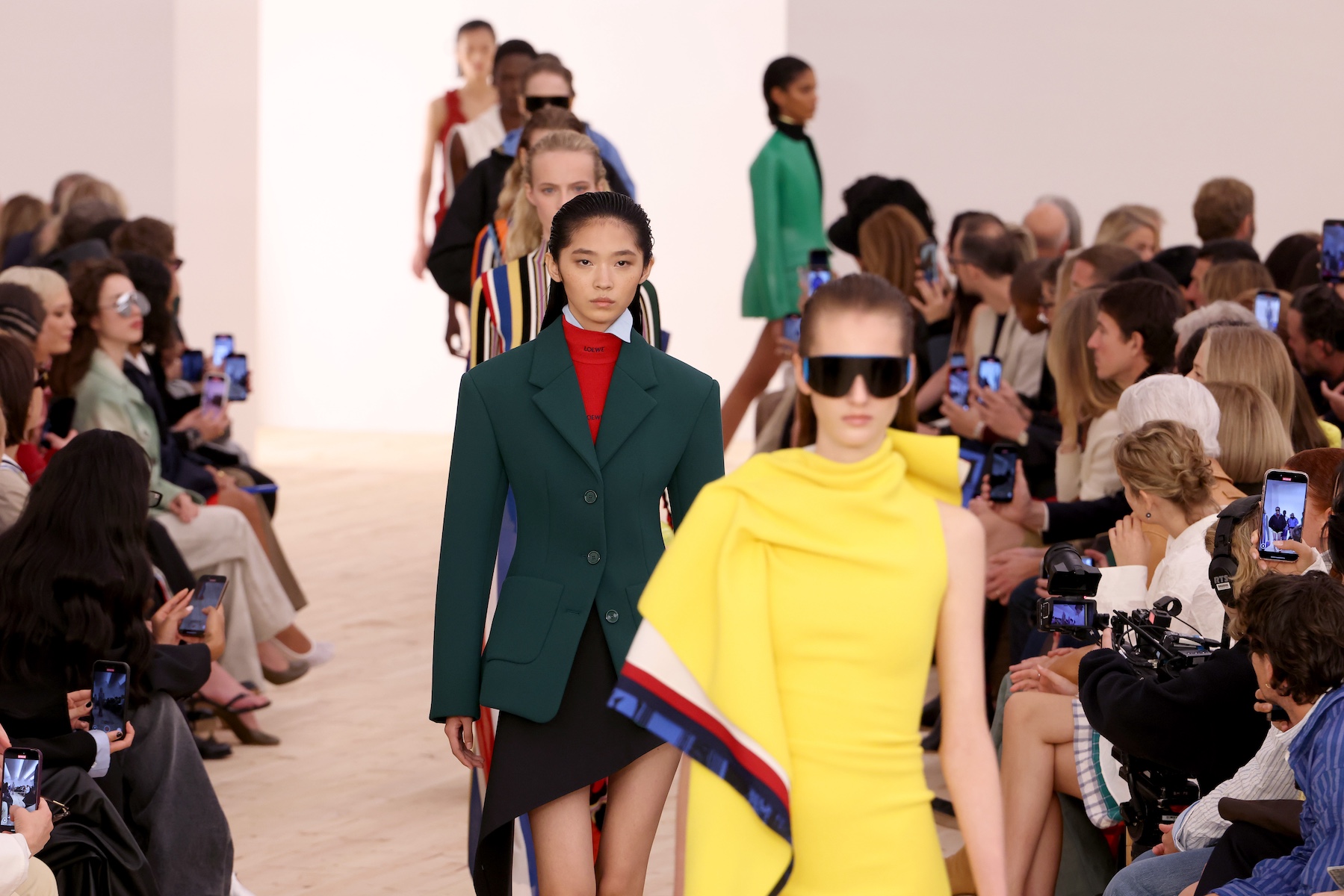 Jack McCollough and Lazaro Hernandez make a bold start at Loewe, inspired by Ellsworth Kelly’s ‘elemental colours’
Jack McCollough and Lazaro Hernandez make a bold start at Loewe, inspired by Ellsworth Kelly’s ‘elemental colours’The former Proenza Schouler designers presented their debut collection for Loewe this morning, channelling ‘clarity and colour, sensual physicality, and sunniness’
-
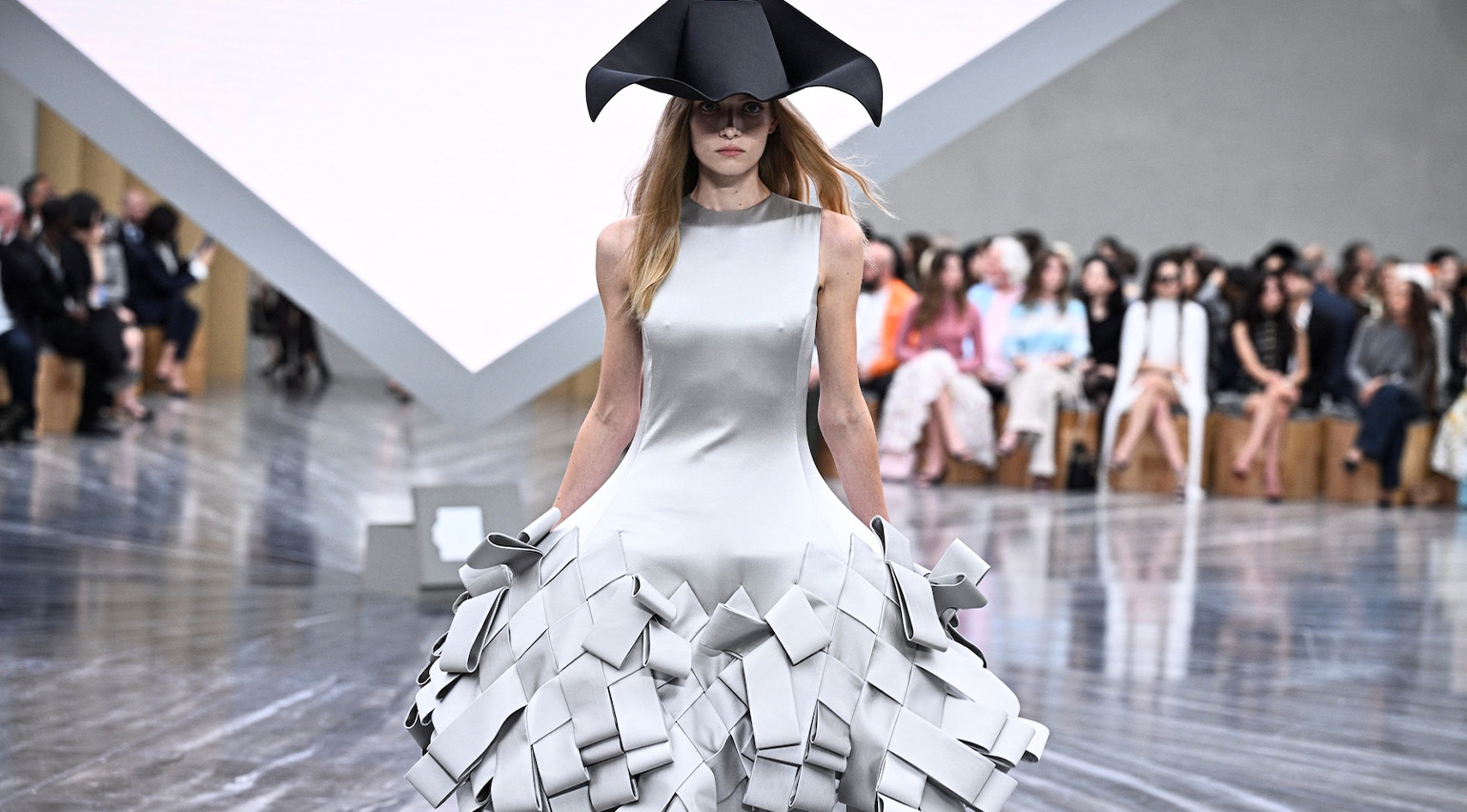 ‘Change is inevitable’: Jonathan Anderson’s first Dior womenswear collection recodes the house’s archive
‘Change is inevitable’: Jonathan Anderson’s first Dior womenswear collection recodes the house’s archiveAn audacious collection from the Northern Irish designer, presented in Paris this afternoon, saw him reconsider the Dior archive in his unwaveringly inventive style